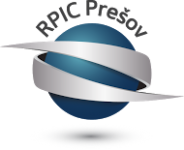Summary:
An Austria-based R&D center in the field of medical technology offers customized, application-oriented anatomical models. These are designed to significantly reduce the number of cadaver tests needed in the development of medical devices and used as advanced solution for education of medical doctors. Also, 3D-printed, individual, patient-specific models are suited to be used for training of complex surgeries. Research cooperations and commercial agreements with technical assistance are sought.
Description:
The R&D center, located close to Vienna, has been established in 2010 as a public-private partnership to develop medical technology solutions in the areas of minimal invasive surgery and other medical processes, and medical robotics. The center is EN ISO 13485-certified and offers application-oriented human anatomical models for medical training, surgical planning and medical device development in addition to a large number of further products and services.
A number of examples of such models are shown in figures 1-5. The pelvic model for fracture treatment (Fig.2), the anatomical kidney model for percutaneous nephrolithotomy (Fig.3) and the neurosurgical training model for cranial needle biopsy handling (Fig.4) have been brought to market in 2020. The surgical training model for radical prostatectomy (Fig.1) is already on the market since 2 years, and the sensor-equipped training model for intubation (Fig.5) since 5 years.
The R&D center and its regional and international partners from research and industry are currently working on the development of further realistic, functional, anatomical models for several medical applications.
Modern medicine allows to perform operations of increasing complexity. Therefore, it is essential to have access to models illustrating the human body in order to enable medical studies and trainings. Traditionally, human cadavers are used in medical education and the development of medical products and surgical methods. Often, however, it is impossible to find specimens with suitable anatomies or a suitable clinical history of the deceased persons. Therefore, in recent years, anatomical models have been used more and more frequently.
The anatomical models developed by the Austrian R&D center come much closer to reality in terms of their appearance and structure as well as their function and mechanical properties (e.g. haptics) than the standard products currently offered by other model manufacturers that are not able to provide these features. The models are application-oriented, meaning that they are designed according to the specific needs of an application and focusing on its critical parameters. Appearance, structure and function of the models are therefore designed along the planned surgical applications. For example, the colour features, elasticity and viscosity of a models‘ material very effectively support differential diagnosis of a tumour by palpation during an operation process. The models also enable examination of fluid or gas transportation in vessels and the pumping capacity of different parts of the heart during a cardiosurgical procedure.
In addition, the R&D center has developed a unique silicone printing technology for the production of soft structures that provides unprecedented realistic properties to such body parts.
The R&D center has also developed an efficient process for application workflow analysis and a novel manufacturing process, which allows for combination of different materials such as the addition of silicone and the integration of sensors, and manufacturing methods. Furthermore, the manufacturing of such models is cost efficient and manufacturing lead times are optimized. Also, due to specifics of the production method, even the tiniest structures are visualised on the models.
International partners for commercial agreements with technical assistance and research cooperation agreements are sought. Commercial agreements with technical assistance would be concluded with partners currently working with cadavers or anatomical models who need novel solutions for specific applications. In a research cooperation, the R&D center would like to further develop the 3D printing process as well as the combinations of different material for model optimisation.
Type (e.g. company, R&D institution…), field of industry and Role of Partner Sought:
The R&D center would like to conclude commercial agreements with technical assistance with partners who are currently working with cadavers or anatomical models (e.g. medical training, medical device development, surgical planning) and searching for novel solutions for their actual problems (e.g. availability of cadavers; realistic haptics; customized application-oriented models; reduction of development costs; usability optimization) such as:
• well established medical device manufacturers as well as medtech startups
• clinics and clinicians (for tests and studies)
• technical and medical universities (R&D, education and training)
• medical training centers
• suppliers of additive manufacturing technologies (machines and material => e.g. soft material printing; bioprinting)
Partners in this type of agreement would acquire either already developed and produced anatomical models or custom-designed models. The R&D center will provide additional services such as the integration of further properties and functionalities into models of specific body parts according to the requirements arising from the intended application.
In addition, the R&D center is looking for research cooperation partners to further develop the 3D printing process and the combinations of different material in order to optimise the performance of the anatomical models. For this, research organisations and companies of any size with advanced expertise in additive manufacturing technologies are sought.
Stage of Development:
Already on the market
Comments Regarding Stage of Development:
Application-oriented models are already available for several medical applications. Further models will be jointly developed with new partners.
IPR Status:
Secret Know-how
Comments Regarding IPR Status:
Patents are planned.
External code:
TOAT20210316001








